
© Stephanie Berger. (Click image for larger version)
Andrea Miller/Gallim and others
You Are Here
★★★✰✰
New York, Hearst Plaza, Lincoln Center
30 July 2021
www.gallim.org
www.lincolncenter.org
Dance from Andrea Miller’s Gallim dancers held together her sweeping site-specific work, You Are Here, around (and in) the pool at Lincoln Center. It encompassed much, from a salute to the Lenape people who lived here before this island became a European colony to, most particularly, our current Covid-19 pandemic era. There was a sculpture and sound installation and a lot of passionately acted words, but it was Miller’s dancers’ forceful and liquid dancing that pulled it all together.
The installation, snaking around the pond and into the area with trees to the south of it, was a curiosity that opened a couple of weeks before the performances. Headless, abstracted figures made of layers of clothes and fabric flowers on unseen armatures spoke to you if you stood in the right place. I went the week before the live event, finding that not all the sound spots worked and when they did, the words, whether delivered with drama or blandly, spouted stories in their middles, without attributions to anchor them. There was singing at one, music or sounds at others. I had no idea whose words they were, even whether, as the digital program for the performance indicated, they were from various people who work at Lincoln Center and at other organizations. Nothing made me want to stay and listen.
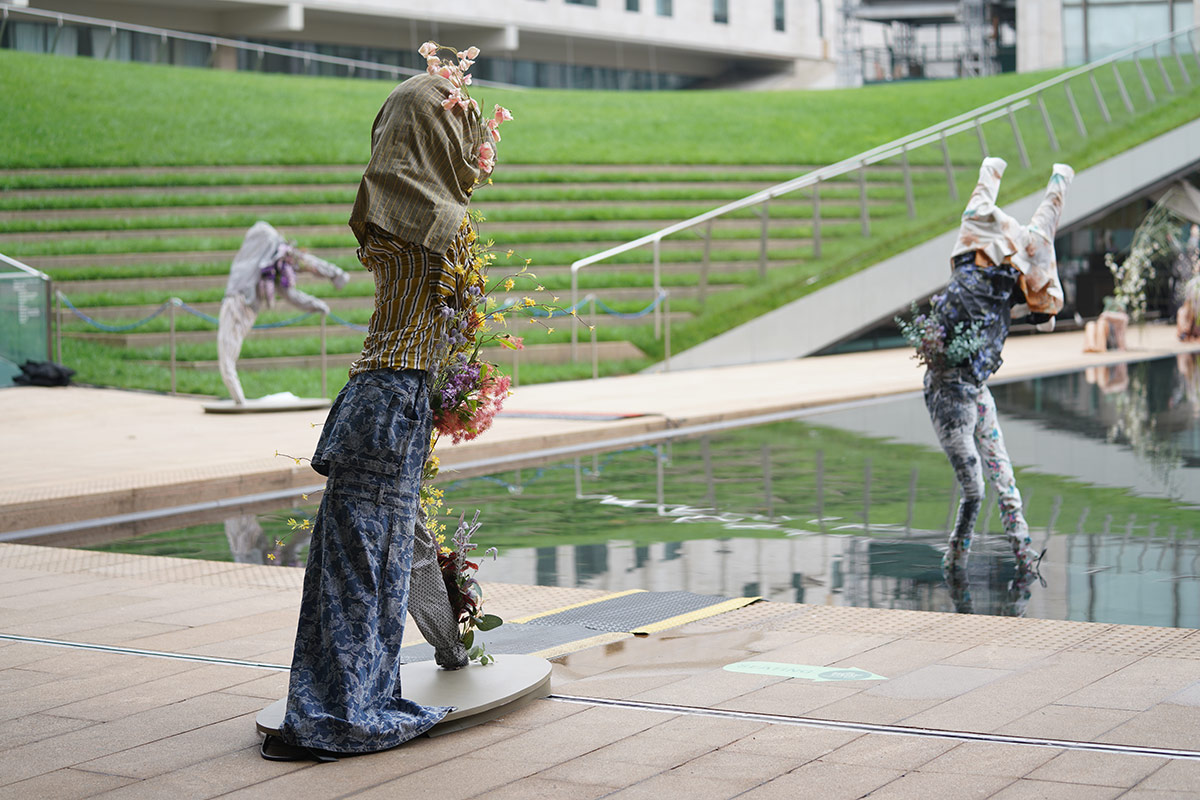
© Justin Chao. (Click image for larger version)
Before the performance – I went to the last one – attendees could wander around the sculptures (most stuck to their seats), but though some emitted music or sounds, none I went to told stories. And my idea the week before that dance would enliven them and let us understand them – though I didn’t know how that would work – was wrong, fortunately so. The performance made no visible use of them (though verbal parts may have been part of the installation), had no glitches, and went off very well, with strong, beautiful dancing, often in unisons or relays, and stories powerfully projected, if often too verbose.
The dancers, in costumes of shiny gold or purple, walked slowly, with deliberation, around the pool before they plunged in, splashing and dancing in waves. It was effective. Muriel Miguel, a founder of Spiderwoman Theater, an indigenous feminist theater group since 1976, was the first to tell her story. Seated and resplendent in a richly layered outfit, she was moving when she told us of the death of her son-in-law from Covid.
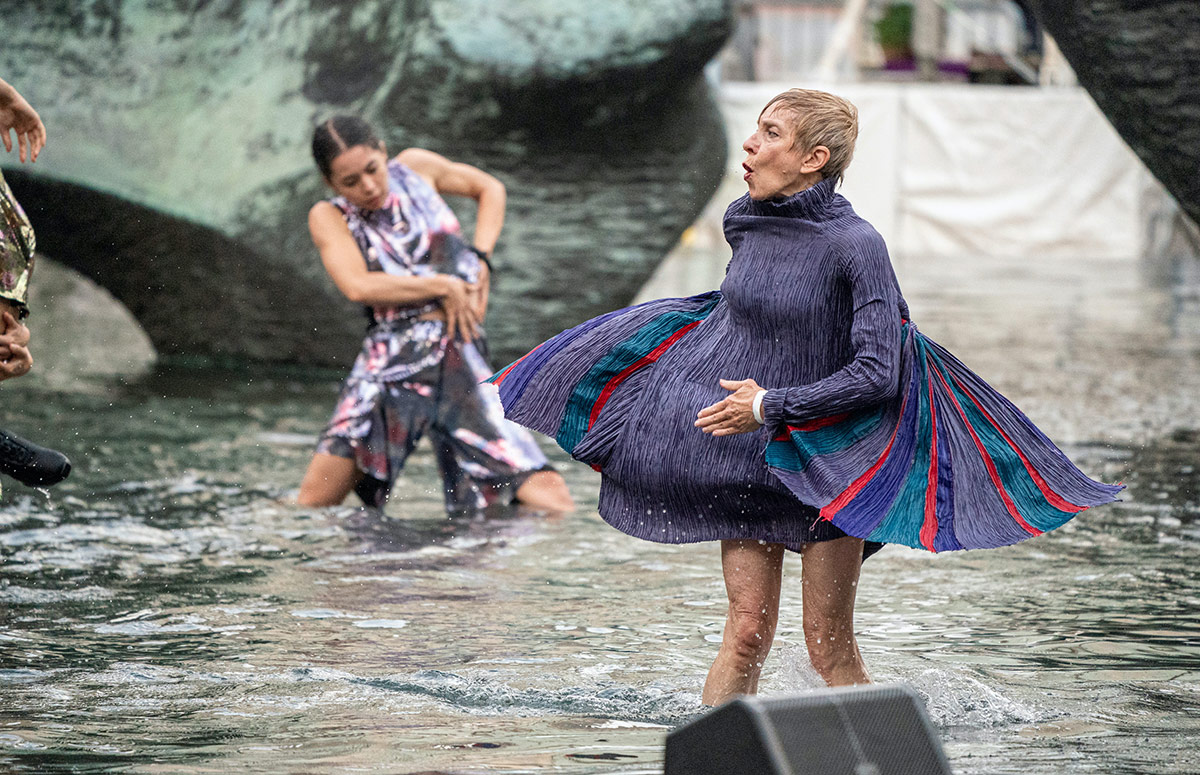
© Stephanie Berger. (Click image for larger version)
The online program had a lot of words and a lot of names, but no clear account of who was doing what and I only sometimes caught the introductory names. Miller and Lynsey Peisinger were co-directors of this complicated project. Mimi Lien did production design and Justin Hicks was composer and sound artist.
After the salute to the Lenape, dancers swaying and shifting their hips to strong rhythms moved down the grassy hill to the north of the pool, while others danced in the water, until the hill dancers joined them. This lovely, graceful hip shift became a movement motif in You Are Here. Another was a dancer or several holding a large white cloth waving overhead.
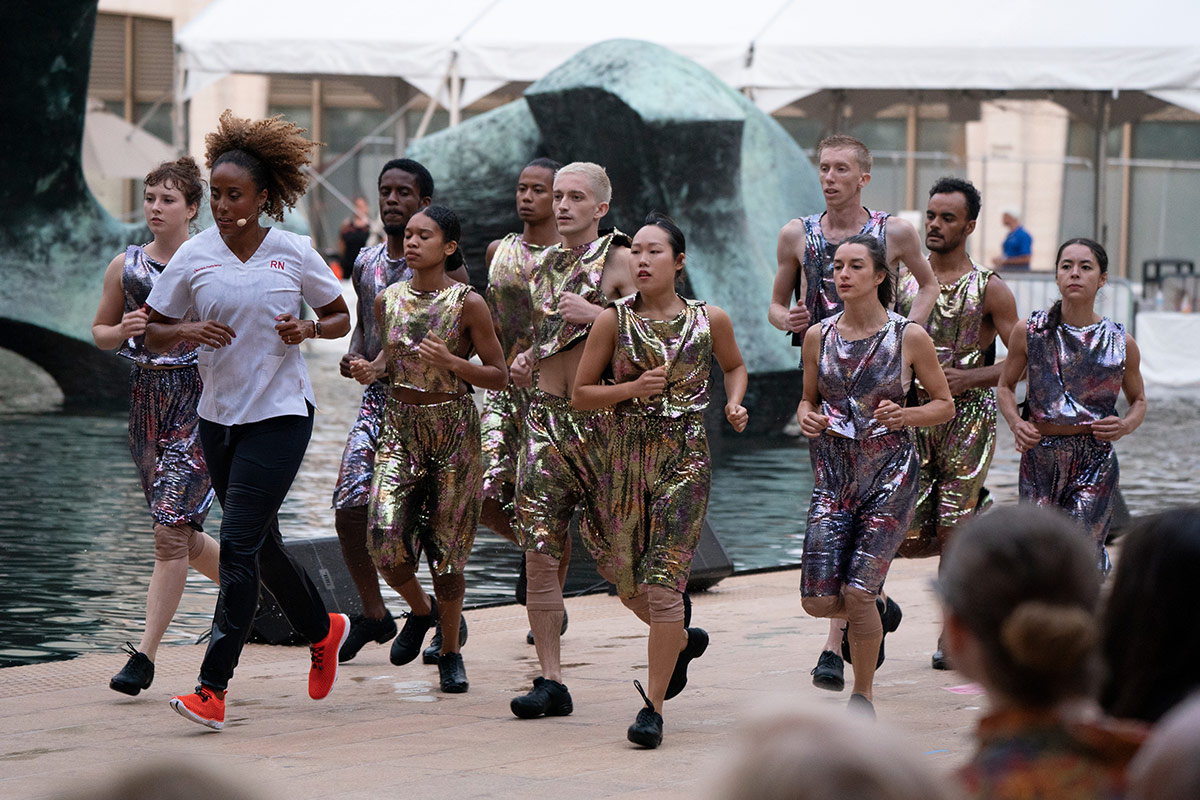
© Stephanie Berger. (Click image for larger version)
That cloth appeared during Valarie Wong’s marathon run around the pool. I wasn’t sure whether she was speaking as she ran (her mouth moved) or it was a voiceover, but what she told us about being an ICU nurse during the pandemic, about patient care, about medical workers who got sick, tired, burnt out, as she ran and ran, making her run a visible metaphor for the endless work and pain endured, was the emotional heart of You Are Here. A phalanx of dancers slowly turned in the water. Dancers ran with Wong, but after they left, she continued, running and running.
I was always happy to see the dancers; Miller deployed her ten movers over this huge area very adroitly. Watching more waving hips and sailing white cloths, we heard a man’s poem about community, solidarity, nature, breathing. An Asian woman in bright pink invoked George Floyd, Ahmaud Arbery, Breonna Taylor. Entering the water, she spoke of stereotypes about Asian women and Asians being accused of bringing the virus, her voice heard even as she lay in the water.
We heard a man’s voice speak of watching Balanchine’s Jewels, and Taylor Stanley, a star dancer at New York City Ballet and part of Miller’s Gallim for these performances, danced beautifully for us. He was the only dancer who also had a voice introduction, telling us his name and walking off. The other fine dancers were Lauryn Hayes, Christopher Kinsey, Nouhoum Koita, Misa Lucyshyn, Gary Reagan, Connor Speetjens, Haley Sung, Georgia Usborne, and Amadi Washington.
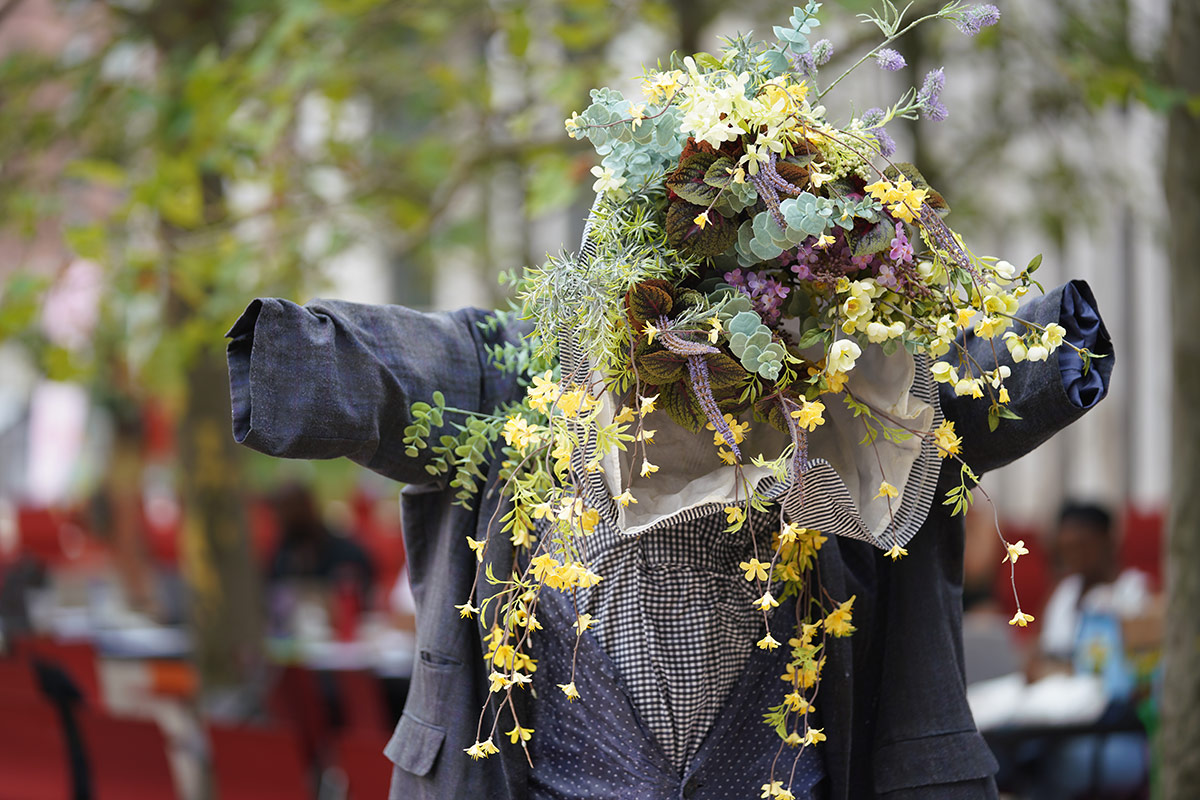
© Justin Chao. (Click image for larger version)
A “Fabulous Queen” was introduced and Egyptt LaBeija of the House of LaBeija strutted in a dramatic red wrap, removing it to show a shiny long red gown, to a dance-propulsive Whitney Houston song with the words “I Want to Dance with Somebody to Love Me.” Dancers came in, dancing and clapping. They danced in the water, they danced to our applause on dry land before us, a fittingly joyful, hopeful end to the You Are Here journey.
Though I often wanted to edit down the excessive verbiage that encompassed so much, it was a meaningful show, and the visual journey with which the dancers framed it all so beautifully, made this journey much worth taking.














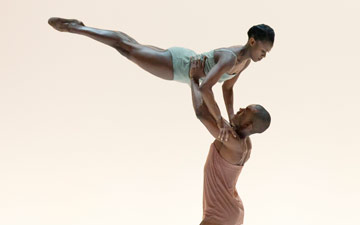


You must be logged in to post a comment.